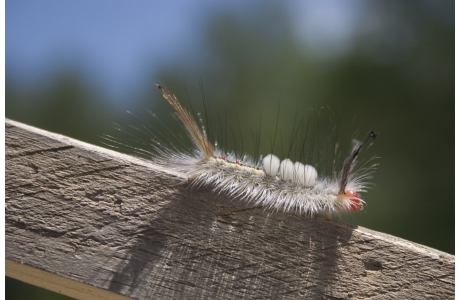Insect stings and bites in children: Overview
Stings and bites from bees, wasps, ants, and other insects often cause pain, swelling, redness, and itching around the sting or bite. They usually don't cause reactions all over the body.
In children, the redness and swelling may be worse than in adults. They may extend several inches beyond the sting or bite.
If your child has a reaction to an insect sting or bite, your child is at risk for future reactions. Your doctor will help you know how to treat your child's sting or bite, and how to best prepare for any future problems.
What are the flu-like symptoms you can have after an insect bite or sting?
Some insect and spider bites or stings can cause flu-like symptoms to develop within hours of a bite or sting. Or symptoms may be delayed up to 3 weeks. Flu-like symptoms include:
- Fever.
- Shaking chills.
- Muscle or joint aches.
- Headache.
- Swollen glands.
- A vague feeling of illness (malaise).
How are insect bites and stings treated?
Your doctor may prescribe medicine if you have an allergy to bites and stings. But most bites and stings will heal on their own. Your doctor can recommend over-the-counter medicines, creams, or lotions to help relieve the pain of an insect bite or sting.
How can insect repellents help prevent problems from insect and tick bites?
You can lower your chance of being bitten by an insect or spiderlike animal (arachnid) by using insect repellents. Mosquitoes, biting flies, and ticks can cause annoying bites and sometimes a serious disease. Mosquito bites can spread infections such as West Nile virus (a virus that causes swelling of the brain called encephalitis), Zika virus, and malaria in some parts of the world. Tick bites can cause serious diseases such as Lyme disease and Rocky Mountain spotted fever. Bites from biting flies are painful and may cause a skin infection.
White tussock caterpillar

Four tufts of hair (which may be white, gray, or yellowish) on the back help identify many types of the tussock caterpillar. They may also have a bright red head, a broad black stripe along the back, yellow stripes on each side, and two red glands near the hairs on the back.
This is a very common caterpillar and can be found in the eastern United States and southern Canada.
The hair on these caterpillars is known to cause allergic reactions.
Caring for yourself after an insect bite
Home remedies may help to relieve the pain of an insect bite. While they haven't been proven scientifically, many people report relief. You can try one or more and see whether they help you.
- Apply calamine lotion, underarm deodorant, or witch hazel to the bite.
- Soak the bite site in Epsom salt and water.
What are problems that can happen after an insect or spider bite or sting?
Problems that can happen after an insect or spider bite or sting include:
- A severe allergic reaction (anaphylaxis).
- A toxic reaction.
- A large skin reaction with swelling and redness that spreads away from the site of the bite or sting. It may be as large as swelling across two major joints, such as from the elbow to the shoulder.
- A skin infection.
- Serum sickness.
Insect stings and bites: When to call
Call 911 anytime you think you may need emergency care. For example, call if:
- You have symptoms of a severe allergic reaction. These may include:
- Sudden raised, red areas (hives) all over your body.
- Swelling of the throat, mouth, lips, or tongue.
- Trouble breathing.
- Passing out (losing consciousness). Or you may feel very lightheaded or suddenly feel weak, confused, or restless.
- Severe belly pain, nausea, vomiting, or diarrhea.
Call your doctor now or seek immediate medical care if:
- You have symptoms of an allergic reaction not right at the sting or bite, such as:
- A rash or small area of hives (raised, red areas on the skin).
- Itching.
- Swelling.
- Mild belly pain or nausea.
- You have a lot of swelling around the site (such as your entire arm or leg is swollen).
- You have signs of infection, such as:
- Increased pain, swelling, redness, or warmth around the sting.
- Red streaks leading from the area.
- Pus draining from the sting.
- A fever.
Watch closely for changes in your health, and be sure to contact your doctor if:
- You do not get better as expected.
©2011-2024 Healthwise, Incorporated